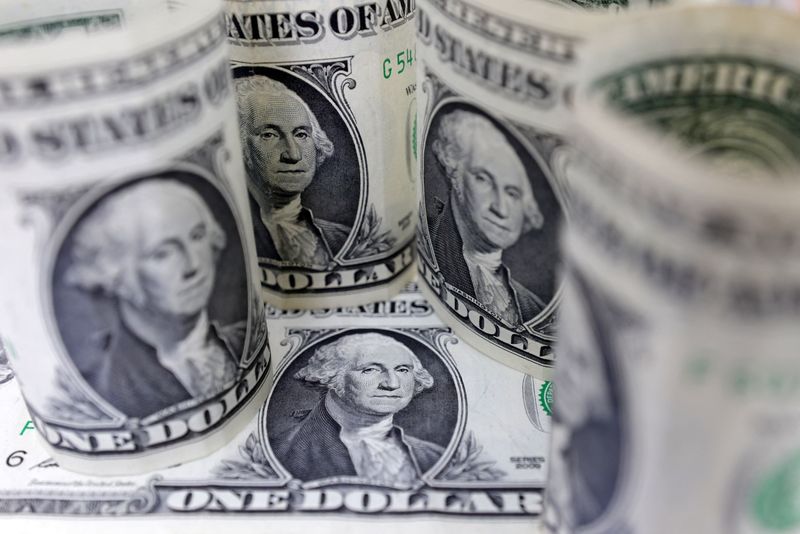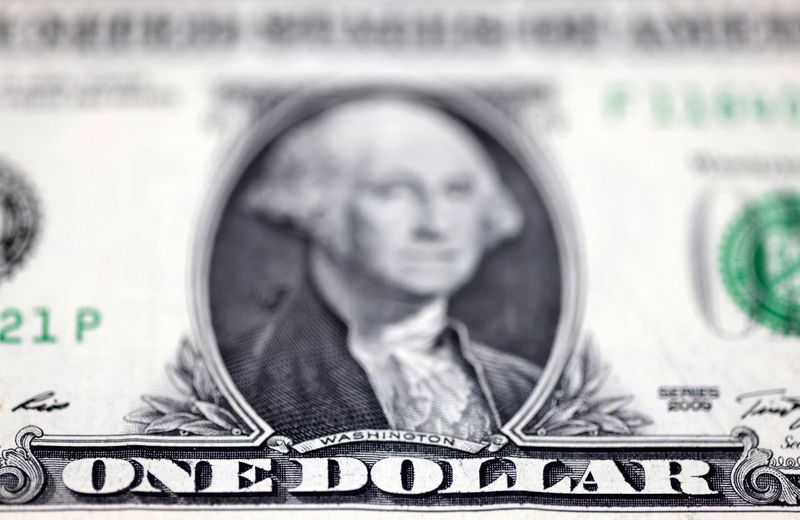By John McCrank
NEW YORK (Reuters) - The dollar was slightly lower on Thursday following a 1% loss the previous day when data showed U.S. inflation was not as hot as anticipated in July, prompting traders to dial back future rate hike expectations by the Federal Reserve.
Investors slashed bets on the possibility that the Fed will raise interest rates by 75 basis points for a third consecutive time to help tame decades-high inflation when it meets in September after a report on Wednesday showed U.S. consumer prices were unchanged in July.
The dollar recorded its biggest decline in five months following the report as traders readjusted their forecasts to factor in the chance that inflation may have peaked.
Fed funds futures traders are now pricing in a 58% chance of a 50-basis-point hike in September and a 42% chance of a 75-basis-point increase.
The greenback's slide continued into Thursday, falling as much as 0.57% early in the session, but then clawed back the bulk of those losses. The dollar index was down 0.114% at 105.1 at 3:30 p.m. EDT (1930 GMT), well off of its two-decade peak of 109.29 hit on July 14.
"We might have seen the peak, but I'd be cautious about expecting significant dollar weakness from here," UBS FX strategist Vassili Serebriakov said.
The currency's drop may have been cushioned by Fed officials who attempted to temper expectations of significantly looser policy, with Neel Kashkari telling a conference on Wednesday that the central bank was "far, far away from declaring victory" on inflation.
Data on Thursday showed that U.S. producer prices unexpectedly fell in July amid a drop in the cost for energy products and that underlying producer inflation appears to be on a downward trend, while jobless claims rose for a second straight week in a labor market that remains tight.
The positive inflation data helped equity markets surge on Wednesday and into Thursday, but the rally fizzled as investors questioned the Fed's next steps.
"The loosening of financial conditions that is occurring across the global financial system is not in alignment of where Fed officials would like to take policy, so the reality for FX traders is that there may be a short horizon on market movements right now," said Karl Schamotta, chief market strategist at Corpay.
The euro and Japanese yen were among the currencies to benefit from the dollar's weakness on Wednesday.
The euro was last up 0.23% at $1.0322, while the yen dipped 0.06% to 132.95 yen after a rise of more than 1% on Wednesday..

Sterling slid 0.18% versus the dollar to $1.2195, giving back some of its more than 1% gain the previous day.
Graphic: Dollar, https://fingfx.thomsonreuters.com/gfx/mkt/movangqompa/Pasted%20image%201660205365612.png
(Reporting John McCrank in New York; additional reporting by Iain Withers in London; Editing by Toby Chopra, Will Duham and Matthew Lewis)
